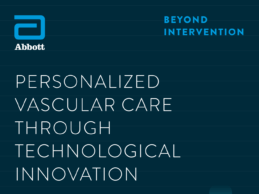Blockchain technology has somewhat infamously been described as “a solution in search of a problem,” but as the healthcare industry responds to the demands of the pandemic, several valuable use cases have surfaced that could benefit from employing the emerging technology.
Due in large part due to its ability to promote trust, transparency, and privacy, blockchain has emerged as today’s best technology-based option for accomplishing the important objective of delivering real-time
Read More
8 Ways Advanced Analytics Can Help You Decide If Telehealth Should Be Temporary or Permanent
Over the past few months, primarily as a result of the COVID-19 pandemic, telehealth has gone from a “nice-to-have” to a “must-have” for healthcare providers. The surge of COVID-19 patients in the spring, coupled with “stay-at-home” orders in many states, meant that many patients in need of care for chronic conditions and other non-emergent health issues were unable to visit their providers face-to-face.
Telehealth became the emergency solution, aided by relaxation of government regulations
Read More
Is Remote-Learning A Public Health Dilemma?
In 2014, pediatric occupational therapist Angela Hanscom set out to better understand the student experience by sitting in on middle school classes. She sat. She sat some more. She then noticed that a day’s worth of sitting was affecting her ability to focus. She asked “how on Earth do these children tolerate sitting this long?” before spotting all the fidgety, distracted bodies – “well, the short answer is they don’t.”
This phenomenon is rooted in the commonly ignored factor that students
Read More
Lean on Your Connected Community of Care in Times of Crisis
We’ve all experienced crises in our lives. They may be personal in nature (e.g., involving our interpersonal relationships), organizational (e.g., relating to our employment or retirement income), or nature-made (e.g., floods, tornados, or the COVID-19 pandemic). When crises hit our communities, the impacts can be widespread and far-reaching. Healthcare providers and community-based organizations (CBOs) are called upon to provide more rapid and extensive care and support to the community than is
Read More
Mobile Point-of-Care Ultrasound Is Now A Frontline Warrior in Pandemic
Health authorities need to prioritize delivery and the repurposing of mobile point-of-care ultrasound machines which have proven to be reliable, affordable, and effective in saving the lives of coronavirus patients.
Most Americans are familiar with ultrasound technology from the scans done to check on the status of the fetus during pregnancy.
But far fewer are aware of how valuable mobile versions of these units have also become in America’s emergency rooms where they almost
Read More
How Yale-New Haven Uses IPA in Revenue Cycle to Tackle Inefficiency
As the pandemic heads toward a second year with no further financial stimulus guaranteed, hospitals and health systems are seeking ways to reduce costs and improve revenue cycle performance. Intelligent process automation (IPA) is an emerging solution designed to optimize operations and increase productivity through a combination of process modeling, process automation, and artificial intelligence.
IPA in the revenue cycle enables healthcare organizations to shift manual, repetitive work to
Read More
4 Ways to Combat Hidden Costs Associated with Delayed Patient Care During COVID-19
COVID-19 terms such as quarantine, flatten the curve, social distance, and personal protective equipment (PPE) have dominated headlines in recent months, but what hasn’t been discussed in length are the hidden costs of COVID-19 as it relates to patient adherence.
The coronavirus pandemic has amplified this long-standing issue in healthcare as patients are delaying routine preventative and ongoing care for ailments such as mental health and chronic disease. Emergency care is also
Read More
How RPA Can Help Get COVID-19 Vaccines to High-Risk Patients First
While most of the public’s attention is focused on the horse race for an approved COVID-19 vaccine, another major hurdle lies just around the corner: the distribution of hundreds of millions of vaccine doses. In today’s highly complex and disconnected health data landscape, technologies like AI, Machine Learning, and robotic process automation (RPA) will be essential to making sure that the highest-risk patients receive the vaccine first.
Why identifying at-risk patients is
Read More
How Data-Driven Technology Holds The Promise of Better Outcomes for Vascular Patients
Abbott recently released global research on vascular patient care, designed to shine a light on the vascular patient journey. The report called “Beyond Intervention” uncovers the universal challenges faced by physicians who deliver vascular care, their patients, and the hospital administrators who support them. It also explores how the right use of technology and data could potentially enable more precise diagnoses and better treatment strategies to ensure the best possible patient
Read More
Will Nanox Disrupt The X-Ray Systems Market?
With its share price falling from more than $66 to less than $24, September was a tumultuous month for Nanox.
On August 25th, the medical imaging start-up closed its initial public offering, having raised $190m from the sale of 10,555,556 ordinary shares at a price of $18 each. Money poured in as investors were sold on Nanox’s cold cathode x-ray source and the subsequent reduction in costs that it would enable, as well as the vendor’s pay-per-scan pricing model that would let the company
Read More











